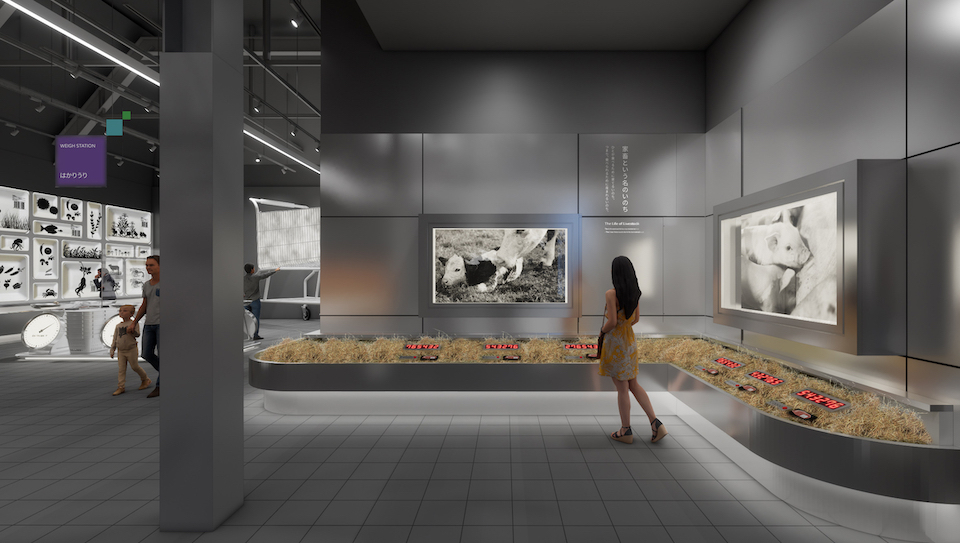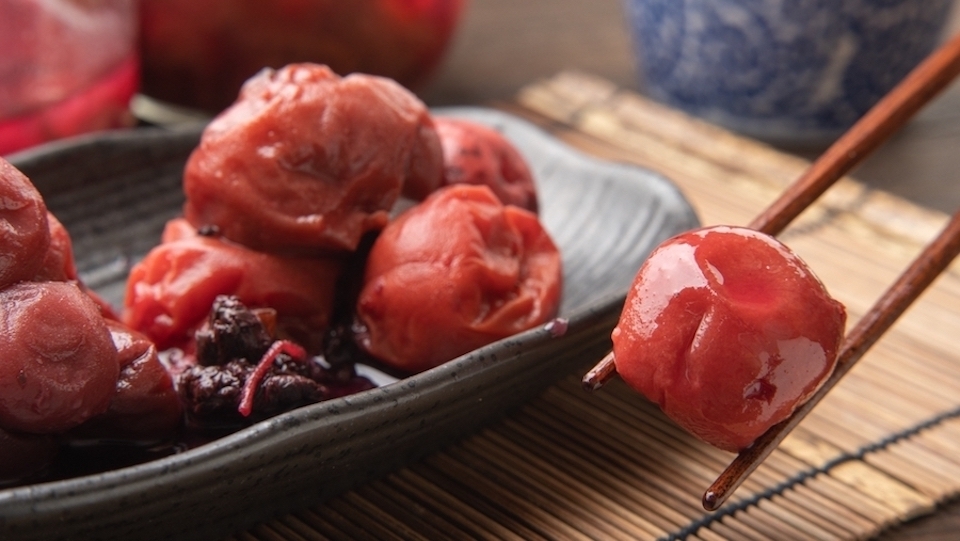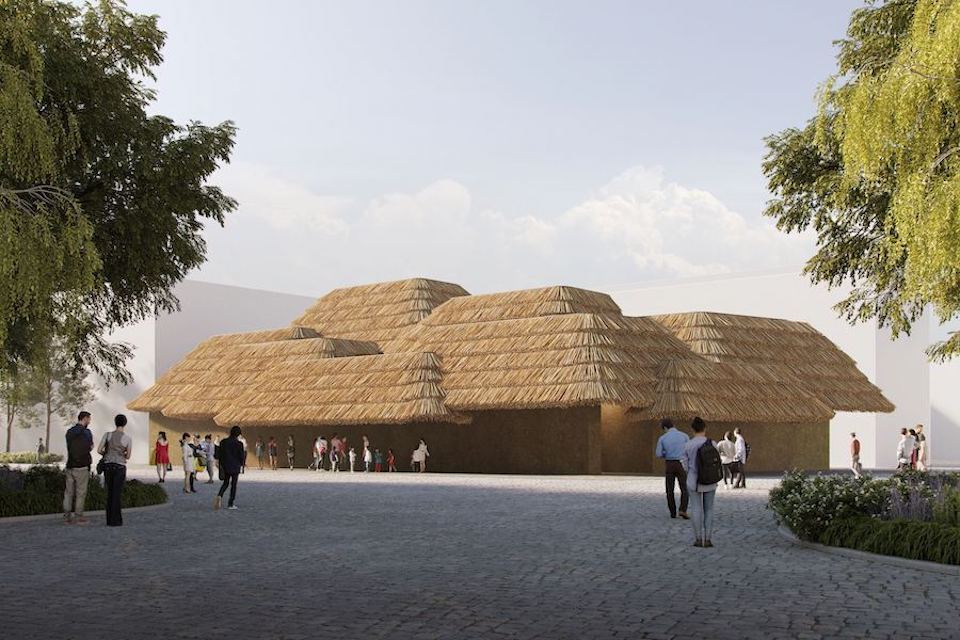EARTH MART, one of the signature pavilions at Expo 2025 Osaka, Kansai, Japan, embodies the overarching Expo theme of “Designing Future Society for Our Lives.” The concept behind EARTH MART’s reexamination of values relating to gastronomy is “the cycle of lives.” It will share with the world the sense of thankfulness and wisdom underpinning Japanese food culture, inviting visitors to reflect on the value of eating.


The “Marketplace of Life” visualizes the amount of food that we humans consume. For example, the average Japanese person eats approximately 28,000 eggs in a lifetime, a statistic cleverly exhibited as an upside-down pyramid that hangs from the ceiling like a chandelier. ©︎EARTH MART
In Japan, it is customary to say itadakimasu before a meal. The phrase—literally “I receive”—expresses our indebtedness to and thankfulness for nature and Earth, as well as those who produce the ingredients that make up the meal and the lives of the animals that nourish us.
EARTH MART, a signature pavilion of Expo 2025 Osaka, Kansai, which will be held from April 13 to October 13, 2025, focuses on the theme of “the cycle of lives.” It aims to provide immersive experiences that cultivate a greater sense of appreciation for the food we eat.
“We believe that thankfulness is the seed of happiness. Society would improve if people were more considerate toward others,” asserted KOYAMA Kundo, producer of the pavilion. “While expos normally showcase new technologies, nurturing the values essential for the future is equally fundamental. That’s the kind of pavilion we want EARTH MART to be,” he added.

Japanese screenwriter and scriptwriter KOYAMA Kundo pictured alongside Myaku-Myaku, the official mascot of Expo 2025. In the background is Kumamon, a black bear PR mascot for Kumamoto Prefecture also created by Koyama, which has been selected as a “special supporter” of the Expo.
The pavilion is designed as an imaginary supermarket that will “reset” our preconceived ideas about food. While supermarkets are indispensable to modern daily life, they often prioritize visual appeal over acknowledging the reality that food comes from living beings. “We want visitors to feel the pulse of life behind the everyday setting and sense how food is rooted in certain values,” Koyama explained.
The pavilion comprises two main zones. The “Marketplace of Life” visualizes the total amount of food a person consumes in a lifetime. For example, it showcases a chandelier-shaped installation of 28,000 eggs—the estimated number an average Japanese person consumes over their lifetime—creating an eye-catching spectacle sure to generate buzz.

A section dedicated to reflecting on the lives of farm animals raised for human consumption. ©︎EARTH MART
The “Marketplace of the Future” highlights food-related ideas and techniques nurtured in Japan and shares them with the world. As an island nation blessed with natural abundance, Japan has developed a rich culinary heritage. EARTH MART presents a selection of 25 Japanese ingredients and foods chosen for their sustainability, nutrition, eco-friendliness, and other key qualities, collectively known as the “EARTH FOODS 25.” Concept dishes prepared by five young chefs using these ingredients will also be presented in the pavilion. “We hope this pavilion will not only highlight Japan’s food culture but also serve as a global platform for sharing EARTH FOODS from various countries,” said Koyama.
Another notable feature of the “Marketplace of the Future” zone is Sony Group’s Roku-Shoku, a form of culinary recording technology created as an exhibit that “draws close to hearts and minds.” Just as sound and video can be recorded, Roku-Shoku has been developed to record (ki-roku) food (shoku) preparation methods. The system works by digitalizing and storing all the information needed for cooking a particular dish, such as ingredient timings, cooking temperatures, and mixing methods, allowing future cooks to follow Roku-Shoku’s navigation system and reproduce dishes with precision.

Umeboshi, made by salting and pickling plums for long-term preservation, have been popular since ancient times, and are mentioned in literature as early as the 10th century. When properly stored, they are said to last for several decades, with some even lasting up to 100 years. AOMAS/SHUTTERSTOCK
“Serendipity is what truly matters, I think. In an era brimming with virtual connections, physically visiting this year’s Expo might create opportunities for new interests and dreams to emerge,” mused Koyama. “Expos are ripe with sparks of inspiration—I hope plenty of people will come to harvest them!”

The design of the EARTH MART pavilion is inspired by traditional Japanese farm villages, featuring a thatched roof made from rice straw. ©︎EARTH MART


